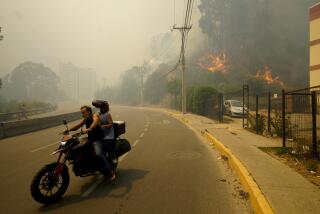Dry spells may predict heat waves
Low rainfall and parched soil are likely indicators of an impending heat wave, especially in the Great Plains of the United States, according to a recent climate study.
In a report published online Monday in the science journal PNAS, researchers reported a correlation between stretches of dry weather and an increased number of hot days during the warmest month of the year. The connection, which varies between continents, could one day help forecasters predict withering heat spells.
Dry soil reduces evaporative cooling and transmits heat to the atmosphere more readily than moist earth. Study authors Brigitte Mueller and Sonia I. Seneviratne of the Institute for Atmospheric and Climate Science in Zurich compared data for global precipitation and extreme hot weather and found a connection that was more widespread than commonly assumed.
When most of South America, the Iberian Peninsula, and Eastern Australia, receive lower-than-average rainfall, the likelihood of an above-average number of hot days increases to 70%, according to the study. Likewise, across much of North America and Eastern Europe, rainfall deficits increase the probability to 60%. Wetter-than-average conditions, on the other hand, reduce these odds to between 30% and 40%.
Recent studies have reported that global warming increases the frequency of hot weather extremes. Study authors say that by monitoring soil moisture, forecasters might one day be be able to predict intense heat waves.
“This is particularly relevant for public health management,” the authors wrote.






